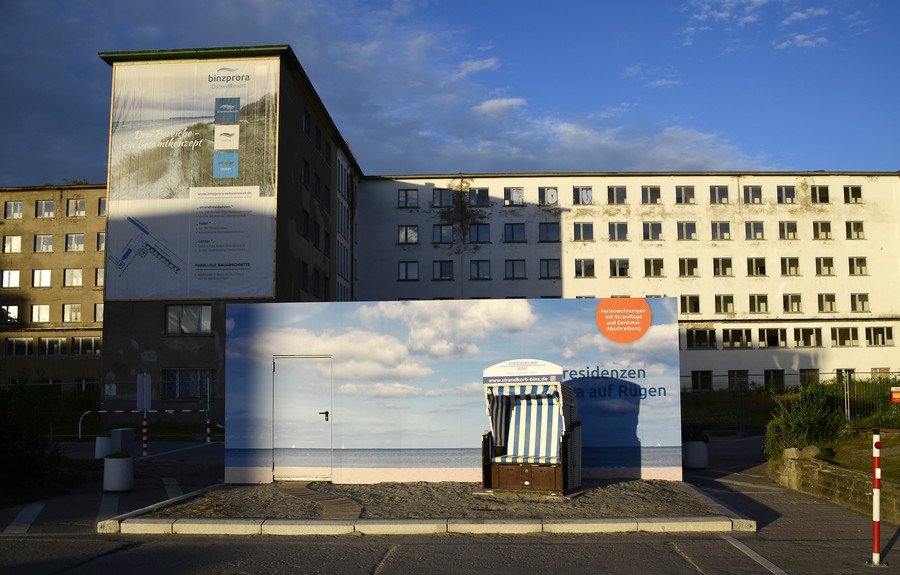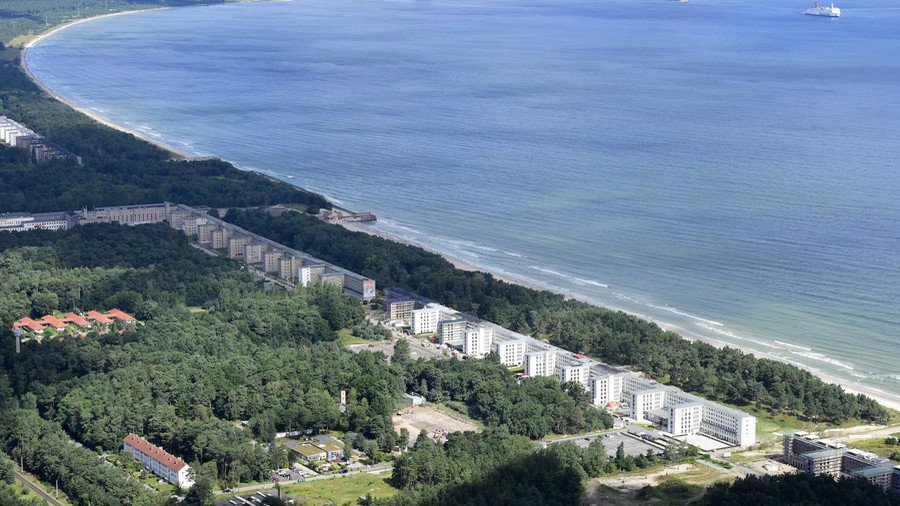A mammoth seaside resort built on Hitler’s orders is set to open after years of renovation. But not everyone is happy that the government found a use for the massive building.
The Prora hotel on the island of Ruegen near the Baltic Sea resort of Binz was built in the late 1930s by Adolf Hitler to accommodate up to 20,000 guests as part of his ‘Strength Through Joy’ (Kraft durch Freude) propaganda program, which would offer people cheap holidays and unite them in spirit. The hotel, 4,500m in length, is one of the longest buildings in the world. But it was never completed and never housed holidaymakers.

But now, German officials have decided the complex can become a seaside resort. Following renovations which took several years, a large part of the gigantic concrete structure was turned into hundreds of flats, a hotel, and a youth hostel. This renovation allows local authorities to start charging a tourist tax of €2.85 per person per day.
Aside from the hotel, the Nazis – specifically, the Third Reich’s chief architect, Albert Speer – planned to build a festival hall and two piers big enough to accommodate cruise ships ferrying Nazi party members to the island.
READ MORE: Hitler busts among Nazi relics found in secret room in Argentina (PHOTOS, VIDEO)
Construction stalled when the war began, and the hotel became a shelter for refugees fleeing the Allied bombings of Germany. After the war, the complex fell into disrepair in East Germany.
Prora consists of several six-story concrete blocks spanning the beach. Ironically, the resort, which received an architecture design award in Paris in 1937, is a monument protected by the state.

Critics, however, say opening the facility will spell the end of people’s memories about its dark past. “It’s good that they’ve found a use for the building and are preserving it, but the flip side is that no emphasis was placed on the need to preserve its authenticity,” Katja Lucke, co-head of a local exhibition, was quoted in the Times as saying.
“I found it disturbing that during the marketing of the site, some developers were too keen to highlight its supposedly positive aspects. They mentioned the prize it won in 1937 and used slogans such as ‘the future grows from tradition,’” she said.
“One architect referred to the ‘smart’ idea the Nazis had. There’s a danger that this uncritical approach will become more established, and that people will end up thinking that not everything was bad under National Socialism.”
Think your friends would be interested? Share this story!

